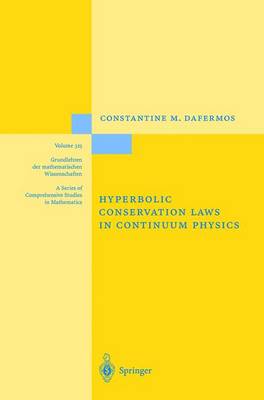Die Grundlehren der Mathematischen Wissenschaften
1 primary work • 2 total works
Book 325
Hyperbolic Conservation Laws in Continuum Physics
by Constantine M Dafermos and M Dafermos Constantine
Published 1 January 2005
This masterly exposition of the mathematical theory of hyperbolic system laws brings out the intimate connection with continuum thermodynamics, emphasizing issues in which the analysis may reveal something about the physics and, in return, the underlying physical structure may direct and drive the analysis. The reader should have a certain mathematical sophistication and be familiar with the rudiments of the qualitative theory of partial differential equations, whereas the required notions from continuum physics are introduced from scratch. The 2nd edition contains a new chapter recounting the exciting recent developments on the vanishing viscosity method; numerous new sections have been incorporated in preexisting chapters, to introduce newly derived results or present older material, omitted in the 1st edition. In addition, a substantial portion of the original text has been reorganized so as to streamline the exposition, enrich the collection of examples and improve the notation. The bibliography has been updated and expanded, now comprising over one thousand titles.
v. 325
This masterly exposition of the mathematical theory of hyperbolic system laws brings out the intimate connection with continuum thermodynamics, emphasizing issues in which the analysis may reveal something about the physics and, in return, the underlying physical structure may direct and drive the analysis. The reader should have a certain mathematical sophistication and be familiar with (at least) the rudiments of the qualitative theory of PDE, whereas the required notions from continuum physics are introduced from scratch. The target group of readers would consist of (a) experts in the mathematical theory of hyperbolic systems of conservation laws who wish to learn about the connection with classical physics; (b) specialists in continuum mechanics; (c) experts in numerical analysis who wish to learn the underlying mathematical theory; and (d) analysts and graduate students who seek introduction to the theory of hyperbolic systems of conservation laws."

